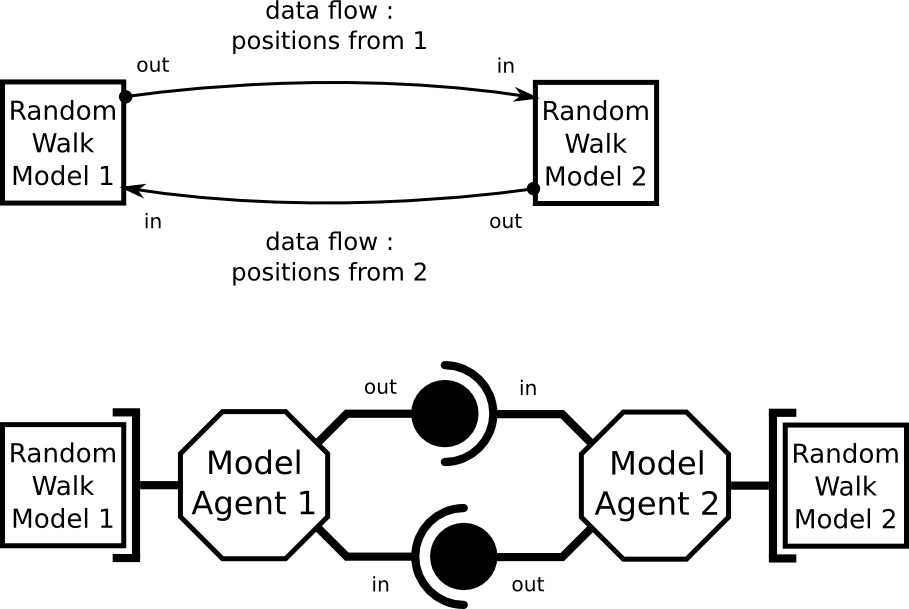The Netlogo models specifications available here and here. The exchanged data will be here the walkers positions (x,y) and the walker ID. The output port of one model is linked to the input of the other.


public class TestModel2 {
/**
* @param args
*/
public static void main(String[] args) {
// create the agent model
RandomWalkModelAgent2 agent2 = new RandomWalkModelAgent2();
// create the model artifact and link it with the agent
RandomWalkModelArtefact2 modelArtefact2 = new RandomWalkModelArtefact2(
2000);
// link agent and model artifact
agent2.setModelArtefact(modelArtefact2);
// create the coupling artifacts and link them with the agent
// output port (linked with agent 2)
OPCA_ExchangedTurtles1 et_opca2 = new OPCA_ExchangedTurtles1(
ExchangedTurtles1.class,
"north");
// input port (linked with agent 2)
IPCA_ExchangedTurtles2 et_ipca2 = new IPCA_ExchangedTurtles2(
ExchangedTurtles2.class,
"south");
// link
// agent 2 with the coupling artifact ports
agent2.addInputCouplingArtefactPort(et_ipca2);
agent2.addOutputCouplingArtefactPort(et_opca2);
// initialize, post ouptuData and execute the model
agent2.initModel();
agent2.setInitialParameters();
agent2.postOutputData();
agent2.executeModel();
}
}